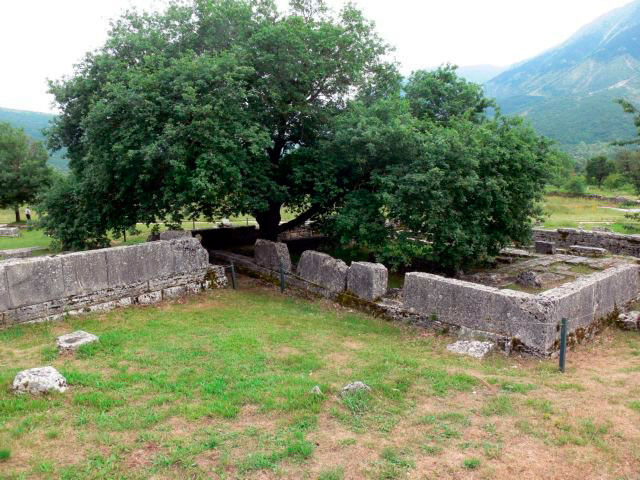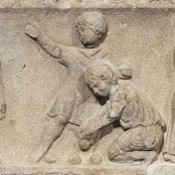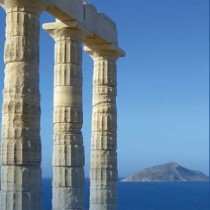Questions that required a prophetic answer from the Oracle of Dodona on matters of politics, religion, family, health, work, travel and property, were written on sheets of lead, the small tablets brought to light by the excavation on the site of the Dodonia Oracle and are a significant source of information on the everyday life of the ancient Greeks.
Most of the unique authentic tablets of Dodona are kept in the Archaeological Museum of Ioannina, said head of the Ephorate of Antiquities of Ioannina Konstantinos Soueref to the Athenian and Macedonian News Agency. He stated that all necessary procedures are going ahead for this heritage to be included on the UNESCO list “Memory of the World”.
Based on the writing, the oracular tablets, on which a total of 4.216 inscriptions can be read, date from the end of the 6th c B.C. to the mid-3rd c. BC. They are usually small lead sections measuring a few centimetres that had generally been used many times. The letters are no larger than 1-1.5 millimetres, while the questions are written in a variety of alphabets and dialects, as people from many places arrived at the Oracle; from Syracuse, Taras/Taranto, Boeotia, Athens and Corinth.
Pilgrims to the Oracle wrote on one side of the lead sheet and then folded or rolled it, closing the question on the inside. As for their subject matter, the questions were both public and private. The former were relatively few and were set mainly by the cities and usually concerned political or religious matters. Most private questions were usually set by men and less often by women or couples and concerned matters that have always preoccupied humankind and are a source of anxiety, such as family matters, health issues, and problems related to work, travel and property. For example, in questions regarding the female sex, the person asks to find out if he will benefit by marrying or whether he will receive the required dowry. Providing for his daughters was a father’s primary concern. There are frequent questions where the interested party asks if he will have children by a specific woman or to which god should he pray in order to father them. In the professional area, activities are described such as farming, fishing, raising livestock, trading, as well as a change of profession.
One of the earlier questions of the Oracle, which is dated at the end of the 6th century B.C and written in Corinthian alphabet, is the one set by Ermon. He asks to which God he should pray in order to have useful children by his wife, Cretaia. In another lead tablet, of the 4th-3rd c. B.C., the locals of Dodona ask if the heavy winter is due to some wrongdoing.
Experts point out that the value of the tablets lies in the uniqueness of the authentic, primary material that contributes considerably to the study of ancient Greek religion, which suffers from the lack of written sources.
Mr. Soueref states: “I believe that the time has come, with the support of the scientific community, to initiate the appropriate procedure for including all the inscribed Dodona oracular tablets in UNESCO, as part of the global cultural heritage, in the “memory of the world”.
The first oracular tablets were found in 1876-77 by archaeologist and politician Konstantinos Karapanos from Arta. Many of the tablets that came to light were published by him in Paris, in 1878, in his work Dodone et ses ruines /- Dodona and its ruins. The bulk of the tablets, which survive today, came to light during the systematic excavations of Dimitrios Evangelides in 1929-1935 and 1952-1959 and were continued after his death by his collaborator Sotiris Dakaris.
In 2006, Eric Lhôte published a significant number of tablets in the book Les lamelles oraculaires de Dodone – The oracular tablets of Dodona. In the mid 1970s, S. Dakaris designed the edition of all the tablets found in his excavations and those of Evangelides. In 2013, the edition was published in two volumes by the Archaeological Society at Athens under the title Τα χρηστήρια ελάσματα της Δωδώνης των ανασκαφών Δ. Ευαγγελίδη / The oracular tablets of Dodona from excavations by D. Evangelides and includes the tablets unearthed in excavations during the years 1929-1932 and 1935.




